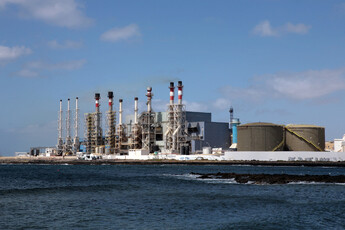North Africa dominates the desalination market by 79.9% in Africa
Cape Town, South Africa – 12 March 2019 – A recent study conducted by Frost & Sullivan found that the desalination market in Africa has recovered from the global economic downturn in 2015-2017, which resulted in low desalination investment across the continent.
If you are interested in discovering further insights about desalination or speaking with our experts, please call (021 680 3574) or email me ([email protected]).
 Frost & Sullivan’s findings revealed that the African desalination market is now stablising and investment in desalination is gaining traction. By 2030, 35% of the world will be living in water-stressed countries and although many efforts are being made to diversify water resources. Laura Caetano, Industry Analyst at Frost & Sullivan, believes the African desalination market will grow at a compound annual growth rate (CAGR) of 10.7% from 2017 to 2022.
Frost & Sullivan’s findings revealed that the African desalination market is now stablising and investment in desalination is gaining traction. By 2030, 35% of the world will be living in water-stressed countries and although many efforts are being made to diversify water resources. Laura Caetano, Industry Analyst at Frost & Sullivan, believes the African desalination market will grow at a compound annual growth rate (CAGR) of 10.7% from 2017 to 2022.
“Of the 54 countries in Africa, 39 have a coastline, making desalination the logical solution, but the high cost of CAPEX and OPEX prove to be a major restraint to the development of the desalination market in Africa,” said Caetano.
The study finds North African countries are the primary users of desalination, holding 79.9% of Africa’s desalination capacity. North Africa is expected to maintain its dominant position in the market with high forecasted growth. Sub-Saharan Africa, on the other hand, is expected to achieve low to moderate growth leading up to 2022 due to the high CAPEX costs associated with desalination plants, paired with the low water infrastructure spend in the region.
The most commonly applied desalination technologies for existing plants in Africa are reverse osmosis (RO), multi-stage flash (MSF) and multi-effect distillation (MED). In recent years, the application of MSF and MED have declined significantly due to their high energy requirements, and the use of electrodialysis and nanofiltration has seen a slight increase due to their energy efficiency and increased water yield. RO will remain the dominant technology.
Frost & Sullivan notes an increasing interaction between the private and public sectors when it comes to infrastructure development, resulting in a growing number of public-private partnerships (PPPs) to fund desalination projects going forward.
Caetano notes that high population growth, prolonged drought conditions across Africa, old and inefficient water infrastructure and increasing PPP’s are the major driving forces behind the growth of the desalination market. However, low water infrastructure budgets and low power availability will continue to restrict potential market growth in Sub-Saharan Africa. Mitigating measures through the use of renewable energy to power plants and the installation of energy recover devices ( ERDs) are growing in popularity and significantly reducing the high OPEX costs associated with desalination, making it an increasingly realistic option for Sub-Saharan Africa.
About Frost & Sullivan
Frost & Sullivan, the Growth Partnership Company collaborates with clients to leverage visionary innovation that addresses the global challenges and related growth opportunities that will make or break today’s market participants. For more than 50 years, Frost & Sullivan has been developing growth strategies for the global 1000, emerging businesses, the public sector, and the investment community.
Contact:
Donna Liedemann
Corporate Communications – Africa
P: +27 21 680 3574
F: +27 21 680 3296
E: [email protected]
T: @FrostSullivanSA
http://dev.frost.com



